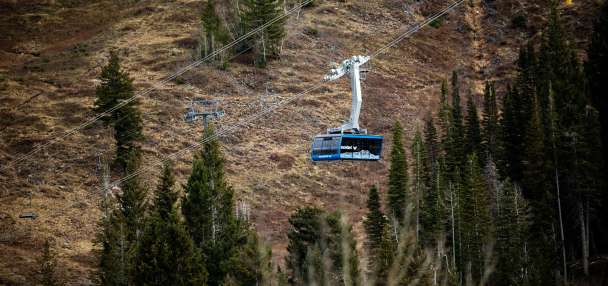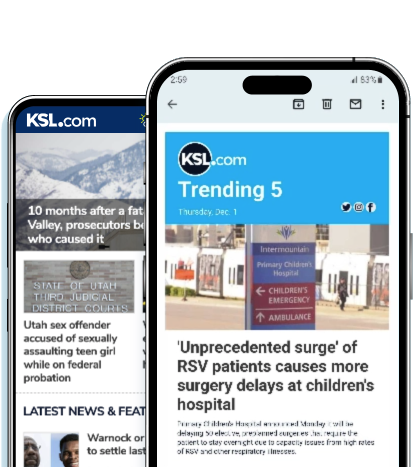Estimated read time: 3-4 minutes
- Moose can be dangerous if they feel threatened.
- Utah has 2,500 to 3,000 moose, often found in forested areas.
- Experts advise giving moose space, keeping dogs leashed, and staying calm.
SALT LAKE CITY — Seeing a moose in the wild while hiking or mountain biking is thrilling. But it's also potentially hazardous to your health. You might want to resist the urge to get closer with your cellphone camera.
There are a few reports of injuries to people and dogs each year due to encounters with the largest animal in the deer family, with adults standing as much as 6 feet tall and weighing 600 to 1,000 pounds.
Moose can be dangerous when they feel threatened. In some areas of the U.S., wildlife agencies report that more people are injured by moose than by bears.
Utah is home to between 2,500 and 3,000 moose, according to the state Division of Wildlife Resources. They can be found along the Wasatch Front and in northern and northeastern Utah, typically in forested areas. Moose generally eat aquatic vegetation in the spring and summer, and then switch to a diet of bark and twigs during the winter.
"In my years of working with wildlife, I have dealt with bears, rattlesnakes, cougars and moose, and the only species that I've had turn and come back at me was a moose," said Rusty Robinson, Division of Wildlife Resources once-in-a-lifetime species coordinator. "Because they are not predators, people often underestimate how aggressive moose can be."
Moose on the loose
Moose can act aggressively when they feel cornered or threatened, but cows can be especially defensive when they have calves, usually in late May and early June. Bull moose are more territorial and aggressive during the fall breeding season, according to the Division of Wildlife Resources.
Moose view dogs as natural predators and feel threatened when they get too close, which can make them very aggressive toward the dog or any people nearby. That can lead them to charge, knock someone over and stomp on them or their dog.
If a moose is in your path and there's not a way around it, be patient. The animal will move away in time, though it might take more than a few minutes.
Some physical warning signs that a moose may become aggressive include:
- Lowering their head
- Hair standing up on the neck
- Licking their snout
- Pinning their ears back
"Like with most wildlife, if you give moose plenty of space and don't try to get too close, it will help keep you and them safe," Robinson said. "Our biologists relocate numerous moose in urban areas every year, and we really want people to admire these amazing animals from a distance and stay safe. If you normally hike with your dog, we strongly recommend keeping them leashed when you are in mountain areas with moose."
Close encounters of a moose kind
Here are some safety tips from the Division of Wildlife Resources to consider if you come across a moose:
- Always give the moose a lot of space and watch its behavior.
- Never try to approach or feed a moose.
- Keep dogs leashed and under control at all times. It is against Utah law to allow dogs to chase or harass protected hoofed wildlife, like moose.
- Stay calm and do not run away. Talk, make your presence known and slowly back away in the direction you came.
- If a moose charges you or chases you, hide behind something solid like a tree or try to get inside a vehicle or building.
- If a moose knocks you down, curl into a ball, protect your head and lie still until the moose retreats.









